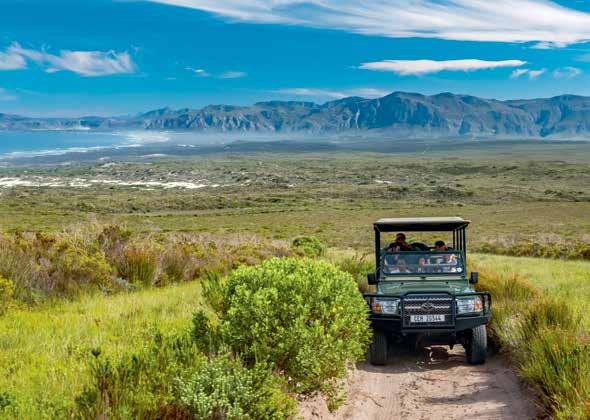
7 minute read
EMBRACING THE WILDS OF SOUTH AFRICA
WORDS Rebel Wylie PHOTOS Sherilea Gaspar
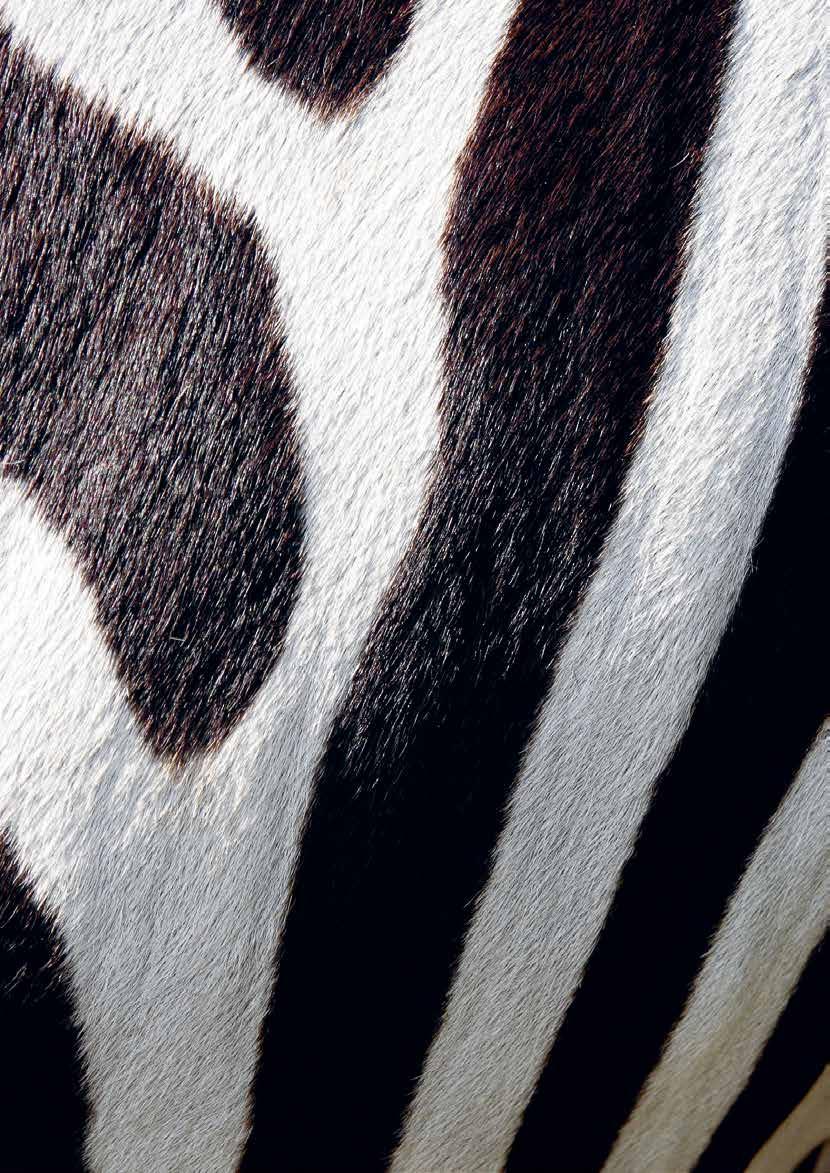
Advertisement
Almost 30 years since the dismantling of apartheid in South Africa, the emerging ‘rainbow nation’ is becoming a tourism favourite, and that’s a plus for wildlife conservation.
Journeying across the globe to visit South Africa might not be at the top of the typical Australian family holiday bucket list, but for those who make the trek, the rewards are plentiful.
South Africa boasts an enviable climate, spectacular coastlines, lush rainforests, snow-capped mountains and of course, the deep-rooted culture and iconic wildlife that draw visitors from all over the globe.
Add to this the vibrant cities, friendly locals and mouth-watering food and wine and it becomes apparent that making a journey to South Africa is well worth it for those adventurous at heart.
However, there’s a particular type of holiday-maker for whom South Africa is a must-see destination, the conservation travellers, and Australian families are fast joining their ranks.
A CONSERVATION DESTINATION
From entomologists recording every detail of the microscopic creatures who dwell in the fynbos shrubland of the Western Cape, the conservationists giving their all in the fight against canned hunting and poaching to the tireless efforts of those working to protect the birdlife of the country’s coastlines, the conservation efforts in South Africa are plentiful.
Visitors are welcomed to not only take a chance at catching a glimpse of beautiful creatures of all sizes up close and personal, but to learn about what can be done globally to ensure that the fragile eco-system is not damaged by humans to the point where doing something about it will be too late.
FOR CONSERVATION TRAVELLERS, PROGRESSIVE TOURISM IS A MUST
In a beautiful location above Walker Bay, a short distance from Hermanus on the Garden Route, with sweeping views over the bay and out to sea, you’ll find Grootbos Private Nature Reserve — a majestic 2500 hectares of botanical and wildlife treasures and a true coiner of the phrase ‘progressive tourism’.
In a nutshell, progressive tourism is a conscious effort to ensure that every action we take benefits someone else or has a positive impact on the environment. And for the team at Grootbos, this message is relayed in every aspect of the reserve.
Much of the organic food eaten by guests at Grootbos is grown in the Grootbos Foundation’s on-site farm or sourced from suppliers within a 100-kilometre radius whenever possible, which may explain why it is so delicious.
Even the still and sparkling water provided in the accommodation comes straight from an aquifer on the reserve. Kids — and grownups — will love the ice-cream made with fynbos honey from the foundation’s 220 hives.
And speaking of bees, guests can take an educational tour with the resident entomologists on site to learn about South Africa’s tiniest creatures that reside in the fynbos bushland — and just how big an impact their existence makes on the entire eco-system.
It’s the kind of holiday experience that makes a trek to South Africa so unique and so worth the effort.
IMMERSED IN SOUTH AFRICA’S CULTURE
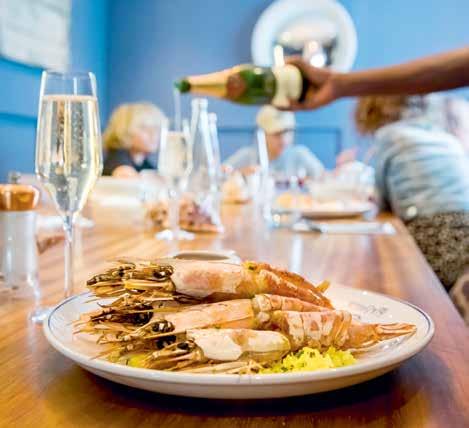
Despite its breathtaking natural beauty, diverse cultures and rich history, South Africa has undergone many acute social challenges. Millions of its citizens still live in extreme poverty and face daily struggles to survive, let alone flourish. And that is never more obvious than on a trip into one of South Africa’s townships.
Despite the hardships, a welcoming joy is contagious when tourists stop by to visit.
Khayelitsha township is one of the largest in the Cape area, and a drive through its makeshift rambling streets might have one imagining a place of despair and little hope. However, those fears are quickly laid to rest with a visit to the Isibane centre within the township itself.
Isibane se Afrika literally means ‘the light of Africa’, a motto that the traditional African and gospel choir that calls the Isbane centre home lives closely by. Using the choir as an instrument for change and a force for good, Isibane se Afrika gives the youth of Khayelitsha the opportunity to be part of something fun, positive and empowering.
Sharing their unique style of traditional African music and dance with guests, the talented members of the Isibane choir create the kind of joyful memories that become ingrained in one’s soul. Through their music and dance, a sense of the beauty and history of South Africa almost seeps into your pores, and for children visiting, a sense of what life is really like for those living in South Africa’s townships is a lesson that leaves a huge imprint.
SOUTH AFRICA’S GAME RESERVES OFFER MORE THAN SAFARIS
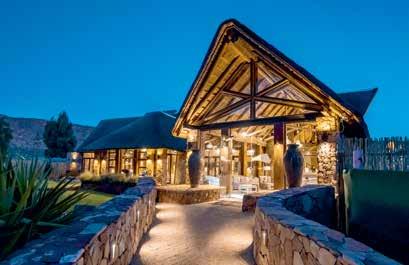
One might be forgiven for assuming that the wildlife we’ve come to associate with African safaris will be there for our grandchildren and their children to see for themselves, but the harsh reality is quite different.
Take the rhino for example. International market for their horns sees the gentle and passive beasts targeted in the name of greed rendering poachers the biggest threat to the sustainability of the species. In our lifetime, the northern white rhino, which has only two females left, will become extinct, and the southern white rhino, which is now classed as near-threatened, may vanish in as little as 10 years. It’s shameful.
Fortunately, there are those on the ground in South Africa doing all they can to ensure that the iconic creatures of their homeland are treated with the dignity and respect they deserve.
Located within a two-hour drive of Cape Town, Aquila Private Game Reserve not only offers a ‘big five’ safari experience with vast mountains and landscape views, but a lesson in conservation that will stay with guests for a lifetime.
Originally established as a sanctuary for animals that can never be released into the wild again and a temporary home for those that need care before being released into the wild, this 10,000-hectare wonderland fiercely protects its inhabitants and works tirelessly to ensure their future.
Canned hunting is a trophy-style hunt where animals that have been bred and raised for the sole purpose of one day being hunted, are corralled in a confined area, which increases the hunter’s chance of making a kill and obtaining their trophy.
The Aquila Animal Rescue and Conservation Centre (ARC) not only rescues these creatures, but ensures that they can safely live out the remainder of their days in the most natural way possible.
ARC is also home to a newly created education centre which houses information on the Eco Synergy systems that are used to run the facilities at Aquila, as well as information on the plight of the rhino, making it a popular accommodation choice for conservation travellers from all over the world, including Australian families. If you're wondering whether or not safaris and children go together, the answer is unequivocally yes.
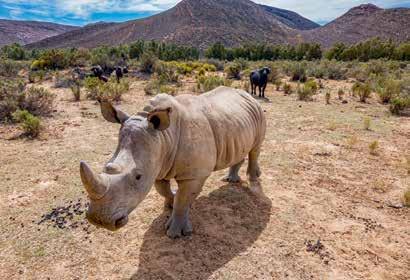
THE BEST TIME TO IMMERSE YOURSELF IN A SOUTH AFRICAN CONSERVATION HOLIDAY
For mild and pleasant weather, the best time to visit South Africa is from May to October, when the days are warm and you can throw on a layer or two in the evening. That’s also a great time to catch a safari adventure, being the dry season when animals congregate around waterholes and rivers.
But ask anyone on the ground, and the resounding answer is that you can visit South Africa at any time of the year and have an incredible time.
Rebel Wylie is a Northern NSW journalist with a focus on creating lifestyle, travel and news content in the parenting and family space.
THERE’S MORE TO SOUTH AFRICA THAN LIONS AND ELEPHANTS
Given the glorious coastlines of South Africa, the seabird population is as varied as it is spectacular.
Penguins and cormorant species including the endangered bank cormorant and Cape cormorant, as well as various species of terns, can be found in the region. They are joined by pelagic birds, such as albatrosses, gannets and petrels — plus oystercatchers, gulls and pelicans among other coastal birds.
However, like the animals of the savanna, South Africa’s seabird population is also under threat.
Organisations such as SANCCOB (Southern African Foundation for the Conservation of Coastal Birds) in Cape Town on the Western Cape and Port Elizabeth on the Eastern Cape, have a primary objective to reverse the decline of seabird populations through the rescue, rehabilitation and release of ill, injured, abandoned and oiled seabirds — particularly endangered species like the African penguin.
